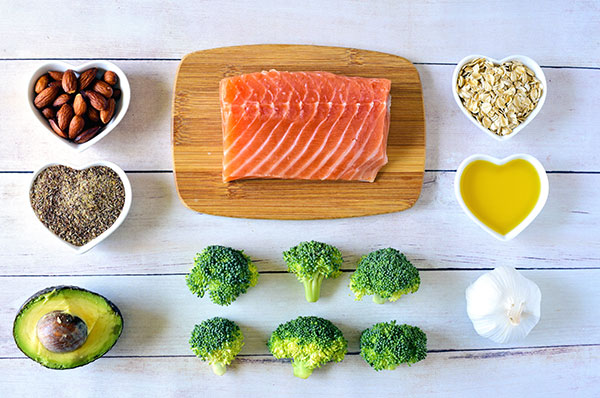Investigators at the Keenan Research Centre for Biomedical Science (KRCBS) of St. Michael's Hospital in Toronto have just uncovered some of the mechanisms underlying the cardioprotective effects of eating foods high in unsaturated fats. The researchers focused their study on the plasma protein called Apolipoprotein A-IV (ApoA-IV). Levels of ApoA-IV increase after the digestion of foods—particularly foods high in unsaturated fats, such as olive oil—and higher levels of ApoA-IV in the blood have been reported to be associated with lower rates of cardiovascular disease.
Results from this new study, published in Nature Communications through an article titled “Apolipoprotein A-IV binds αIIbβ3 integrin and inhibits thrombosis,” demonstrates that ApoA-IV is an inhibitory factor for platelets that play a key role in multiple diseases, particularly in bleeding and cardiovascular diseases.
Platelet aggregation can save lives because it can stop bleeding in damaged vessels,” explains senior study investigator Heyu Ni, M.D., Ph.D., platform director for hematology, cancer, and immunological diseases at the KRCBS. “But we usually don't want platelets to block blood flow in the vessels. This is thrombosis, and if vessel occlusion occurs in the heart or brain, it can cause heart attack, stroke, or death.”
These new findings suggest that ApoA-IV is a blocker of platelet surface glycoproteins GPIIbIIIa (also named integrin αIIβ3). Integrin αIIβ3 is a platelet receptor that is necessary for platelets to clump together in the blood (called platelet aggregation). Platelet aggregation can cause vessel occlusion that blocks blood flow, leading to thrombosis, which is the most common cause of mortality and morbidity worldwide.
Platelets bind together with a series of connectors. For one platelet to bond to another, the platelet receptor integrin αIIβ3 first binds to fibrinogen—an abundant protein that bridges platelets in blood—and fibrinogen molecules then bind another integrin αIIβ3 on a second platelet. Then fibrinogen and likely also other proteins allow many platelets to bind one another, leading to platelet aggregation.
The research team also showed that ApoA-IV could link to the integrin αIIβ3 and block fibrinogen binding, decreasing platelet aggregation in a vessel. The ApoA-IV protein can also change its shape to accommodate increased blood flow and become more effective to protect vessels from complete blockage.
“This is the first study to link ApoA-IV with platelets and thrombosis,” notes Dr. Ni. “With this work, we have also explained why higher levels of ApoA-IV can slow down plaque build-up in blood vessels, known as atherosclerosis because this process is also related to platelet function.”
Additionally, the investigators examined ApoA-IV's interaction with food. After every meal, platelets are stimulated, which makes it easier for them to bond together or bond with white blood cells. ApoA-IV increases in circulating blood almost immediately after meals containing unsaturated fats and decreases platelet hyperactivity and bonding, thus reducing the inflammation after meals and the risk of heart attack and stroke.
Interestingly, Dr. Ni and his colleagues found that ApoA-IV has its own circadian rhythm. It is most active overnight and least active in the morning.
“Mother Nature wants us to sleep well,” Dr. Ni remarks. “So, we are protected by this protein while we sleep, and most likely to experience a cardiovascular event after waking up in the morning.”
The researchers were excited by their findings because they show that foods with high unsaturated fats, along with appropriate sleep patterns, create the perfect combination for the protein ApoA-IV to play a positive role in reducing the chances of cardiovascular disease in the form of atherosclerosis, heart attack, or stroke.



